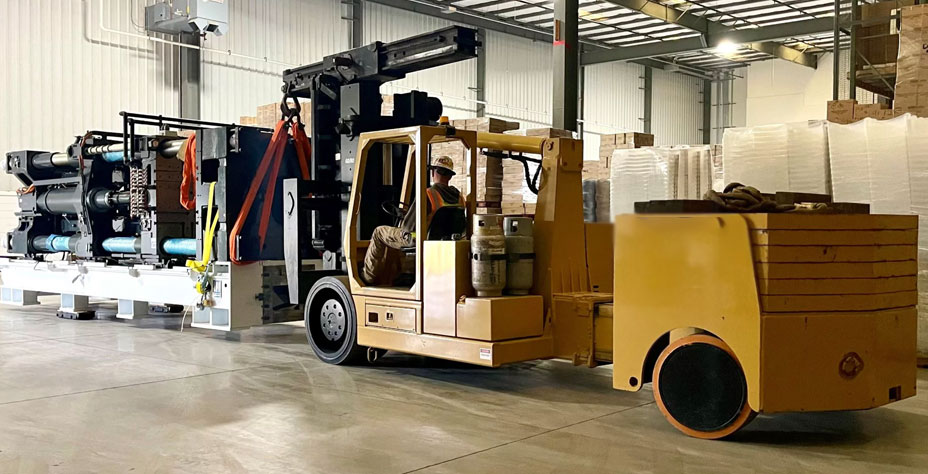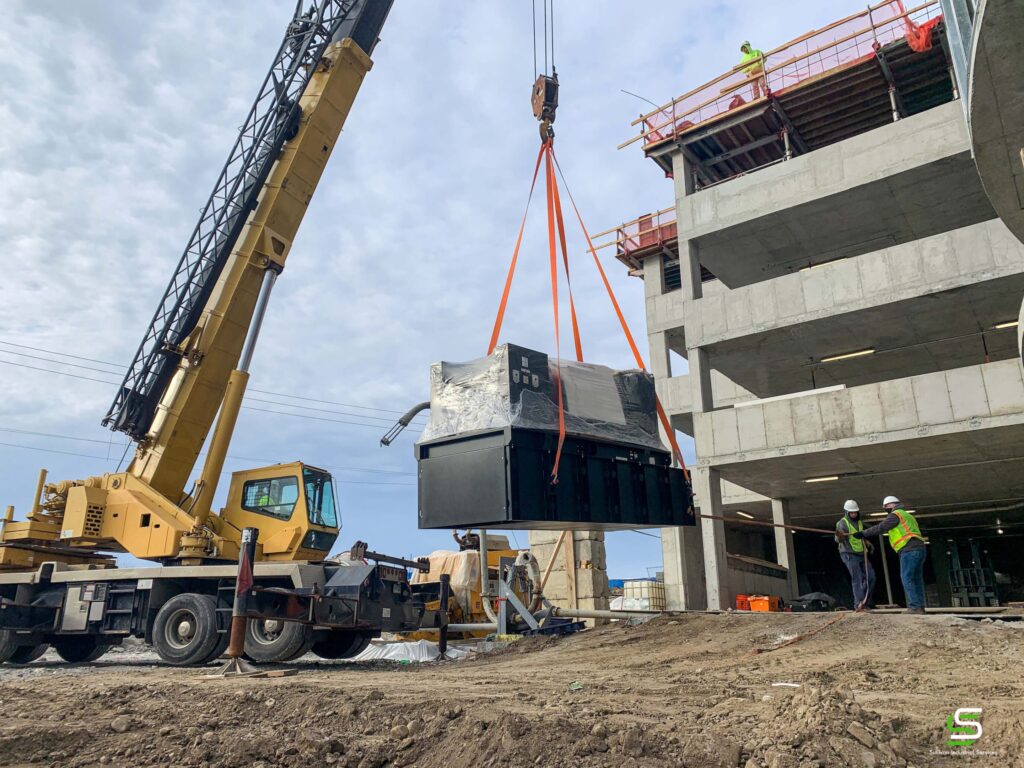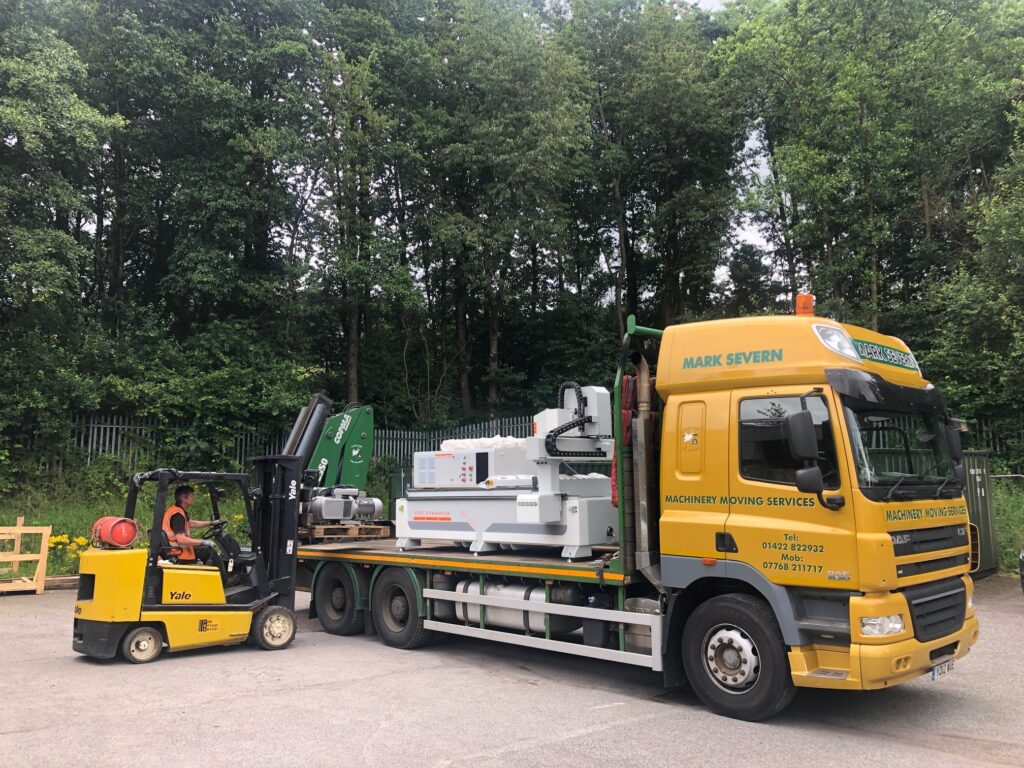What is CNC Machine Relocation?
When it comes to CNC machine relocation, getting it right the first time is crucial. You understand that these machines are the backbone of your operations, and any mishap can disrupt production and cost you dearly.
That’s where Oneworld Logix comes in. With our expertise in relocating machines and entire factories, we ensure a smooth transition with minimal downtime. You can trust our professional team to handle every detail, from planning to execution, so your machines arrive safely and ready to work. Let us take the stress out of your next move, and keep your business running smoothly.
At its core, CNC machine relocation involves carefully planning and executing the move of these complex, automated machines from one location to another. CNC machines are highly sophisticated and can be used for milling, turning, and cutting, all requiring exact settings and alignment to work accurately. When moving a CNC machine, it is crucial to maintain this level of accuracy, as any minor misalignment could lead to significant operational issues.

Planning and Preparation
Successful CNC machine relocation starts with a detailed plan that assesses the machine’s size, type, and current operating condition. It’s important to coordinate schedules to minimize downtime, a significant concern for any business relying on this equipment.
Pre-move preparation also involves securing the right moving equipment, such as crates and protective materials. Having skilled technicians on hand to dismantle complex components is recommended, ensuring each part is safely moved without damage.
Proper dismantling and labeling of parts allow for easy reassembly and setup in the new location. Experts suggest that you document every step meticulously to aid in the reassembly process.
Reassembling and Calibrating
Once the machine arrives at its new location, the next phase involves reassembly. This step is critical as it requires the machine to be calibrated precisely, a task that ensures the intricate parts can function together seamlessly.
Utilizing work offsets can help in maintaining precision by allowing the CNC machine to adapt to a new positional reference, preserving machining accuracy despite changes in the machine’s environment. Be sure to setup the machine by entering these offsets into the CNC controller.
Additionally, reinstallation involves integrating power supplies, aligning tools, and performing a test run to validate everything works as intended. Ensure you involve rigging specialists or trained professionals who are adept at handling such sensitive equipment to guarantee all components function optimally.

Training and Documentation
An often overlooked, but crucial step, is training your team on the specifics of operating the relocated machine. Updating operational manuals and ensuring staff are familiar with any new settings or updated systems helps in maintaining productivity levels. Training also ensures that employees can troubleshoot minor issues that may arise with the newly positioned equipment.
A well-documented setup ensures future maintenance and setups are streamlined and efficient. By focusing on thorough preparation, execution, and follow-up, CNC machine relocation can be done right the first time, minimizing disruptions and preserving the machine’s precision capabilities.
The Cost of Skipping Professional CNC Machne Relocation Services
Opting for DIY relocation can appear cost-effective, but it often leads to unforeseen expenses. Missed steps in disassembly or improper transit conditions can cause expensive damages or require costly repairs.
In contrast, professional services come with comprehensive insurance coverage, providing protection against unlikely incidents and offering peace of mind that your investment is safeguarded. By entrusting your CNC machine relocation to seasoned experts, you ensure that your machinery is handled with the utmost precision and care, right from start to finish.
Key Steps in the CNC Machine Relocation Process
Comprehensive Pre-Move Assessment
Before embarking on the journey of relocating a CNC machine, a comprehensive pre-move assessment is paramount. This initial step involves evaluating the machine’s dimensions, weight, and technical intricacies, which lay the groundwork for a smooth transition. It’s essential to identify potential hazards, such as narrow doorways or stairs, that could pose challenges during the move.
Additionally, proper documentation of the disassembly process and securing a well-detailed reassembly plan are crucial for maintaining the machine’s integrity and functionality. Pre-move preparation also encompasses inspecting and cleaning the machine, draining necessary fluids, and backing up critical software and data as explained here.

Meticulous Packing and Handling of CNC Machne Relocation
Ensuring your CNC machine is safely packed and handled can make the difference between a successful move and a costly disaster. The use of specialized materials such as shrink wrap, bubble wrap, foam padding, and heavy-duty tarps protects sensitive components during transit. These cushioning materials prevent damage from vibrations and impacts.
Additionally, utilizing specialized lifting equipment, including forklifts and cranes, handled by experienced personnel, such as riggers, safeguards against mishaps. Properly securing the machine during transport using tie-down straps and shock absorbers further minimizes risk as detailed here.
Safe Transportation and Installation
The choice of transportation vehicle should be carefully matched to the machine’s size, weight, and destination requirements. During transit, monitoring the journey and minimizing vibrations are of utmost importance to avoid misalignment or operational failures. Upon reaching the new location, reassembling and calibrating the CNC machine according to the documented procedures ensures it is back to its precise operational state.
Thorough inspection for any signs of damage, followed by operational testing, certifies its functionality before resuming production activities. Post-relocation considerations may include updating manuals and training staff on any operational changes, ensuring a seamless transition as outlined.
Approaching each step with diligence and expertise guarantees that your CNC machine relocation happens correctly the first time.
Challenges and Solutions in Relocating CNC Machines
Relocating CNC machines, though often a strategic necessity, comes with its set of challenges. To manage these effectively, understanding the potential issues and having solutions in place is crucial for a seamless transition.
Meticulous Planning and Preparation
One of the most significant challenges in moving CNC machines is the lack of proper planning. Not having the right equipment or tools can lead to potential damage to the machines. This can be avoided by thoroughly assessing the machine’s dimensions and weight, identifying potential hazards, and creating a detailed disassembly and reassembly procedure.
Additionally, pre-move preparation is vital, involving tasks like inspecting, cleaning, and securely fastening machine components. This reduces the risk of damage during transportation, ensuring the machine arrives ready for immediate reassembly and use as noted here.
Protecting Sensitive Components
CNC machines are intricate devices requiring specialized care during relocation. Key to this is the need to protect precision components and maintain calibration sensitivity. Protecting these sensitive internal components necessitates the use of specialized lifting equipment and personnel experienced in handling CNC machines as detailed here. Packaging also plays a critical role, where using materials like shrink wrap, bubble wrap, and foam padding can prevent damage during transit.
Ensuring Post-Move Calibration and Testing
Once the move is completed, another challenge is reassembling and calibrating the CNC machines to ensure they function accurately. Skipping precision leveling and calibration can significantly impact the machine’s performance. Therefore, reassembly should be done on a stable and level surface, using the original user manual as a guide. Additionally, performing operational tests and updating maintenance logs is necessary to ensure the machine’s optimal performance post-move as highlighted in this guide.
By recognizing these challenges and implementing the corresponding solutions, you can mitigate risks and ensure that your CNC machinery relocation is both efficient and successful. Through detailed planning, protective measures, and precision testing, you maintain the integrity and functionality of your valuable equipment.
Conclusion
When it comes to relocating your CNC machines, doing it right the first time is crucial to maintaining efficiency and minimizing downtime. Trusting experts like Oneworld Logix ensures a seamless transition, as we bring years of experience and professionalism to every project. Our team understands the complexities involved and is dedicated to delivering exceptional service tailored to your needs.
So, if you’re planning a move, let us handle the heavy lifting while you focus on what you do best. Choose Oneworld Logix for a stress-free relocation experience and keep your business running smoothly from start to finish.
